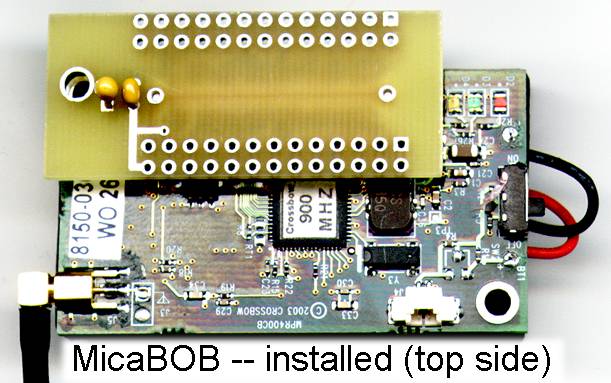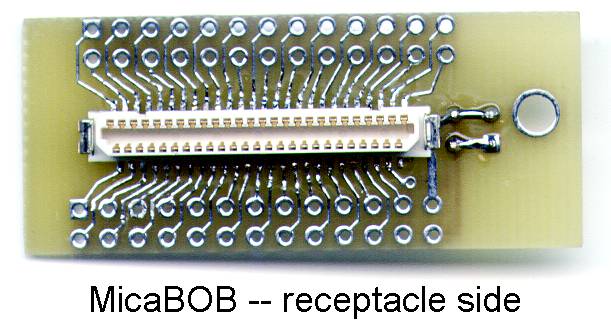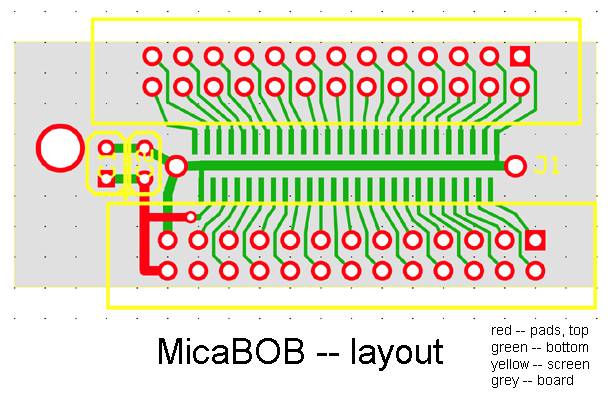
So
much easier than trying to solder to the Mote board itself...
This is a small double sided circuit board with pads for the Hirose
DF9 inter-card connector on the bottom and through holes for two
standard 26 pin ribbon headers (or just soldering your own wires).
Every pin on the Hirose/Mica connector is brought out to a header pad.
There are also pads for two optional bypass capacitors, and a mounting
hole which matches up with the Mote-hole nearest the connector.
